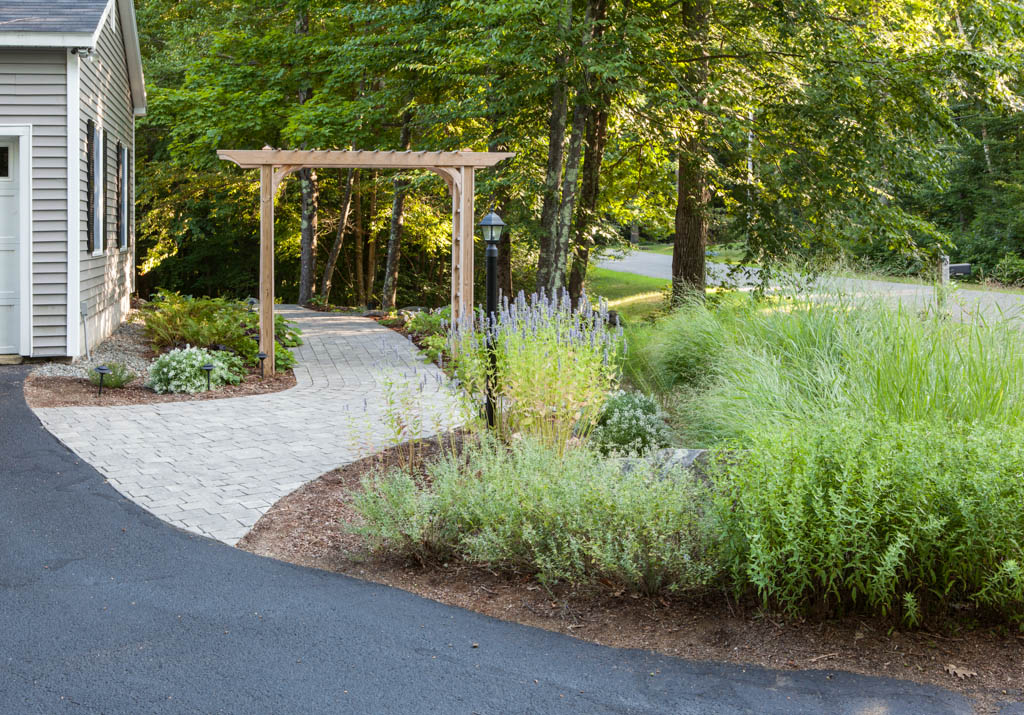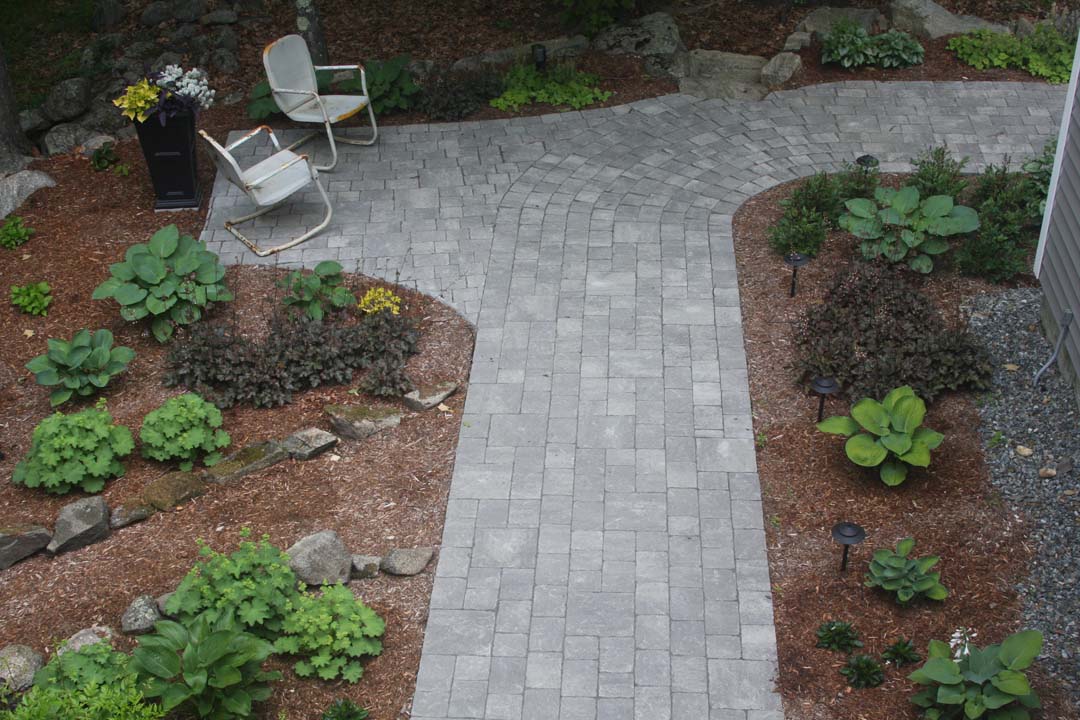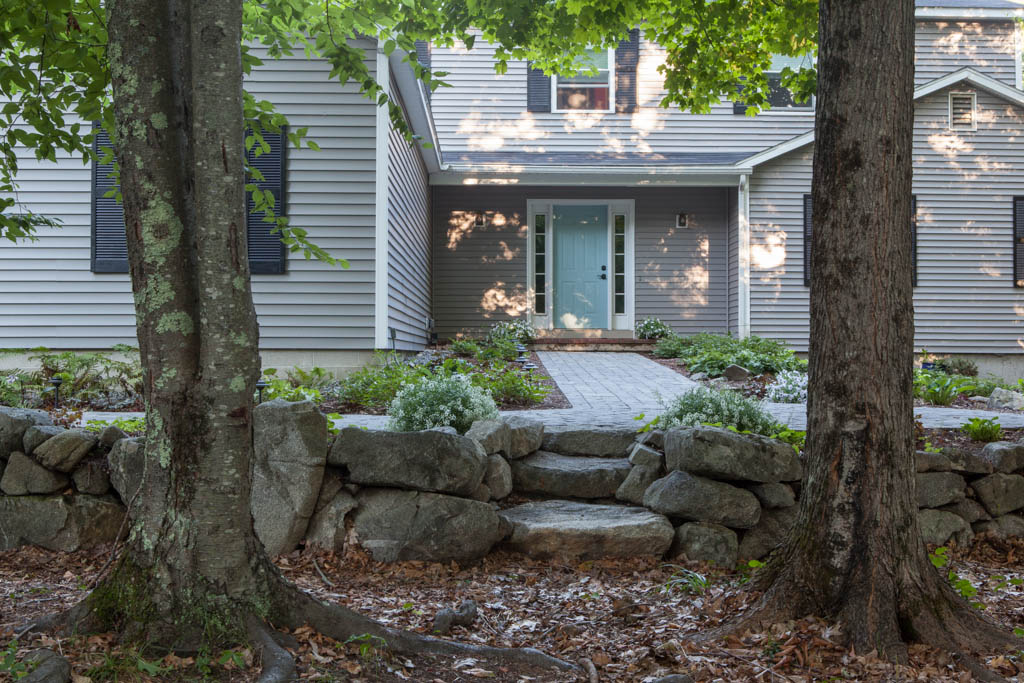I am often asked for help because people don’t even know where to start with their yards. They see a plant they like in a magazine or at a nursery and want to use it, and maybe they have so many ideas from Pinterest that they’re just overwhelmed. In order to get a landscape done right, we have to start with the layout- not the plants. Plants are the accessories, not the outfit. If you like prairie grasses, you can use them – if you like a woodland feeling, you can create that. But the layout has to come first, before the plant choices.
The first area at your house to get right? The front entry. This is the connection between your house and the street. It matters for resale, for your own peace of mind every time you come and go, AND for any and all guests or visitors coming to your house. Sure, we might do more of our living in the back yard, but first impressions are critical. You get a whole lot of bang for your buck if the approach and entry to your home designed well.
I’m not trying to be pretentious as much as practical: the front yard is what might get someone in the door to buy your house later on, and it’s what every single person sees (including you!) as they drive by or come over.
Maybe your builder put in a 30-inch wide concrete sidewalk from the driveway to the front door, and even your own kids tromp happily across the grass instead. Maybe, like me, you have a 30-year-old walkway going right by a huge tree that you don’t dare disturb. Would I suggest starting over? Sure – but that’s not always an option. You can implement any of these ideas (or all of them!) to improve your front entry right away.
There are three parts to your home’s entry: the transition zone, the front walkway, and the entry landing at the front door. Each of these three parts can be carefully considered to make the experience of coming to your house even better. The goal is to extend your hospitality beyond the walls of your home so that people feel cared for the moment they arrive.

THE TRANSITION ZONE
Let’s start at the spot farthest awayy from your house- that’s the transition zone. This is the beginning of the front walkway, where people get out of their cars and approach your house on foot. Here you need to create an adequate landing for everyone to open a car door and get out comfortably, using flagstone or an extension of your walkway surface. Narrow, tight spaces end up with a damaged car door or wet, muddy feet. Know where people get out of their cars and make sure you have an extended, solid, flat space for them to step on. I always think of a couple that’s coming over for a party – they have a couple of kids, a birthday present and a lasagna in the backseat. They need enough room to walk around, unclick car seats, and haul that 9×13 out of the car.
Do you need to highlight the transition zone even more? You can add an address marker, lights, and an arbor at the start of the walkway. You can surround the landing with plantings of your favorite shrub. All these decisions will depend on the layout of your house- how people access your front door, and the impact of your style and budget. In general, the idea is to make the transition zone as gracious and easy to navigate as possible: it’s a visitor’s first encounter with your home.

THE WALKWAY
Next, we tackle the walkway itself. Starting with width: you need at least five feet, and ideally six. We want two people to walk comfortably next to each other, and one of them might be holding a squirming toddler while the other balances a lasagna. They need space. The main entrance pathway should be the widest, boldest walkway in your yard.
Keep it off the house a little! Often these skinny walkways are placed just a few feet off the house- and the house is often 2 1/2 stories high! No one is comfortable feeling like they’re walking a balance beam while a giant building towers over them. Pull the walkway away from the house a bit, to give yourself room for some foundation plantings that will be sized to human scale. Wider walkways and more space off the house are my two biggest recommendations for front yards.
If the walkway slopes, add steps with generous landings so that the pace and effort required to get to your front door are minimized. You might add a bench at one of these landings- just the suggestion of rest can make the whole journey seem more peaceful.
Think about the layout of your walkway. Can you see the front door? Even if there is a curve or turn in the walkway, try to make sure that the goal is in sight if possible. Don’t make people take unnecessary curves- they’ll cut across the grass. Stand at the entrance and snap a picture. Look out especially for other doors people have to choose from- people generally go to the first door they see, so you may have your work cut out for you. We’ll talk about how to highlight the front door next, but also down-play any other doors, maybe by painting them to match your house color so that they fade back in priority. Definitely make sure that your walkway is the broadest, clearest option in the yard.
THE FRONT ENTRY
Once you’ve gotten people out of their cars and along your walkway, it’s time to work on your front door. I believe all houses need an entry landing – a space like an exterior foyer, or the entryway into your house. It’s a space to transition from the public to the private, and it’s often completely left out of builders’ plans. The front entry should highlight your front door and offer some personality and a hint about who lives inside.
The entry landing should be level with the front door- this may require a retaining wall to create a flat area up to your front door. The size and layout of the entry landing is determined by the architecture and footprint of your home, and again your budget and style. It should be scaled in proportion to the size of your house, also – a little bungalow probably doesn’t require a 200 square foot entry landing, and a McMansion will need more space. The roles of this space include creating a transition in feeling from public to private, offering a space for guests to wait, and highlighting the front entry.
This is the equivalent of your home’s foyer, so you can start the hospitality process here. I love for the entry landing to include a small ornamental tree that will create a welcoming canopy and provide shade for this outdoor room. A bench or seating area will create a feeling of welcoming and add another outdoor space to enjoy. Fill the entry landing garden with fragrant plants or your favorite colors. Add a garden ornament or sculpture to give a hint of your personality and style. Give people a little room to breathe as you welcome them inside.
When you’re thinking of your landscape and you just don’t know where to get started, take a look at your front yard. See what’s missing, or what’s in the cards to change for this year. Make sure you have all three pieces covered: the transition zone, the walkway, and the front entry – these will help your home welcome guests effortlessly.




LIke it
pin it
tweet it
email it